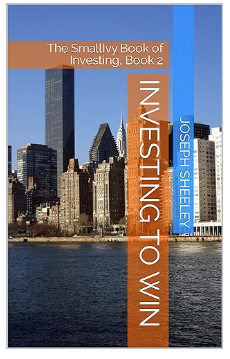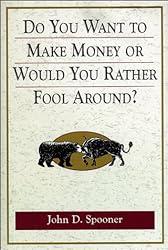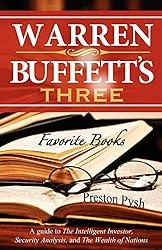
Photo by Alesia Kozik on Pexels.com
" data-orig-size="867,1300" sizes="(max-width: 867px) 100vw, 867px" data-image-title="person holding a smartphone" data-orig-file="https://smallivy.files.wordpress.com/2017/03/pexels-photo-6771900.jpeg" data-image-description="" data-image-meta="{"aperture":"0","credit":"","camera":"","caption":"","created_timestamp":"0","copyright":"","focal_length":"0","iso":"0","shutter_speed":"0","title":"","orientation":"0"}" width="867" data-medium-file="https://smallivy.files.wordpress.com/2017/03/pexels-photo-6771900.jpeg?w=200" data-permalink="https://smallivy.com/2023/12/28/what-factors-to-use-when-picking-stocks/pexels-photo-6771900/" alt="" height="1300" srcset="https://smallivy.files.wordpress.com/2017/03/pexels-photo-6771900.jpeg 867w, https://smallivy.files.wordpress.com/2017/03/pexels-photo-6771900.jpeg?w=100&h;=150 100w, https://smallivy.files.wordpress.com/2017/03/pexels-photo-6771900.jpeg?w=200&h;=300 200w, https://smallivy.files.wordpress.com/2017/03/pexels-photo-6771900.jpeg?w=768&h;=1152 768w" class="wp-image-23890" data-large-file="https://smallivy.files.wordpress.com/2017/03/pexels-photo-6771900.jpeg?w=683" />Photo by Alesia Kozik on Pexels.comStock picking is an art form that requires experience and an inherent feel for which companies will do well, but there are many factors that can be used to screen stocks and narrow the choice down to a few. Today I’ll discuss my method of picking stocks. I’ll start my listing the factors I look at, and then discuss some of the factors in detail.
The theme of The Small Investor is serious long-term growth, not trading stocks or making small profits then selling. This strategy forms the basis for the investing methodology given in Investing to Win. We’re looking for stocks that will grow over the next several years, not just short-term fads. I’ve found it is easier to spot long-term trends than predict what the market will do over any short stretch. In fact, the long-term trends are often pretty clear – it is surprising that more people don’t seem to look for them. Here are the factors I look at, relatively in order of importance:
- The long-term price trend
- Earnings growth rate
- Dividend growth rate
- Return on Equity
- Debt
- Cash flow
- The business type/strategy
In this article I’ll go through each of these factors in detail.
Want to learn the secrets to investing and really turbocharge your returns? Check out the second book in The Small Investor series, Investing to Win. This book presents 40 years of investing experience. Someone starting with zero knowledge of investing and the stock market could take this book and learn all that they needed to invest and do well. It would also be useful to someone who has invested and traded stocks for a while but who is really not getting the kind of returns desired.

Investing to Win
(Note, this site contains affiliate links. As an Amazon Associate I earn from qualifying purchases. When you click on an affiliate link and buy something, The Small Investor will get a small commission for the referral. You are charged nothing extra for the purchase. This helps keep The Small Investor going and free. I don’t recommend any products I do not fully support. If you would like to help but don’t see anything you need, feel free to visit Amazon through this link and buy whatever you wish. The Small Investor will get a small commission when you do, again at no cost to you.)
The long-term price trend
The first thing I tend to look at, which is an obvious but an often over-looked trait, is the price of the stock itself. As said above, the market price will tend to follow the fair value, just as a paper boat floating downstream in a turbulent river will tend to move at the average velocity of the stream, although there may be many changes in velocity if observed for only a short period of time. If a company is increasing share holder value, making the company’s stock more valuable, this will be reflected int he price of the stock eventually.
When looking for candidates, I will flip though several stocks looking at the 5-10 year price history (High-Low-Open-Close charts or candlesticks, preferably) and look for those that I could set a ruler on and draw a relatively flat line. This can be done in a chart book (Dailygraphs, for example), in a publication like Valueline, or, less easily, on the web at Yahoo or another site. The issue with doing this online is that you often need to provide the symbol for the company, so you can’t easily flip through a set of price graphs, and you obviously won’t look at the charts of companies of which you have not heard.
Also, I try to avoid companies that are increasing very rapidly in price. While these companies are the lifeblood of the momentum investor, which is also a perfectly valid investment method, these companies tend to fizzle out and fall back down to earth, producing a bell-shaped curve (see Krispy Kreme for an example). (In The SmallIvy Book of Investing, Book 1 I go into the two main investment philosophies, momentum and value, and provide some tricks for those wanting to do momentum investing.)
An example of a company with this type of price trend is Aflac (AFL). While there are some deviations, over the period growth is relatively steady, so the people running the company obviously know how to grow the business. As long as they don’t change what they do, and the business climate is such that what they have done will continue to work, and the company has not grown as big as it can following that business model, then I would expect this trend to continue.
(If you’d like to learn more about how to decide how much you should put in different types of assets, Sample Mutual Fund Portfolios gives lots of information and examples of how to make allocations for all sorts of different goals, including retirement.)

Earnings growth rate
A second factor I look at when picking stocks is the earnings growth rate. As said previously, we’re looking for stocks that have shown persistent growth and that we expect to continue to grow over the next several years. As also said, a stock price will tend to grow along with the underlying value of the company. Why is this true? To understand the reason, we need to look at the reason people buy stocks and other securities. This is a little complicated, so please bear with me.
The value of an investment depends upon the rate of return and the risk of the investment. In general the greater the risk, the greater the investment return required by investors. For example, a bank account carries very little risk, and therefore people will put money in the bank even when they receive very little interest in return. The interest rate paid by banks is based on the rate at which banks can loan out the money and the rates at which the bank can borrow money. Because the risk on commercial bonds is greater than for a bank account since companies tend to default on bonds more often than banks default on deposits, and because banks are insured by the Federal Government against default, the interest rate paid by bonds will be higher than bank account interest. Note also that if the interest rate that banks goes up, the price of commercial bonds will drop so that their effective yield increases (a bond pays a fixed amount, so if the price of the bonds drops the effective interest rate increases). This is because investors need the bond to pay a certain percentage more than the bank in order for them to take on the additional risk.
Stocks also pay “interest,” although in the case of stocks the payout comes in the form dividends — current and expected future dividends — rather than interest. When a company is new, it pays little if any dividend as it retains capital in order to grow the company, but as it matures it begins to pay a larger and larger share of profits out as dividends until the company becomes fully mature and pays most profits out as dividends. The fair value of a stock is based upon what individuals expect to be the future dividend of the stock, the degree of certainty that individuals believe that the future dividends can be predicted, and the perceived risk of investing in the company (the perceived likelihood that the company will cease to exist). Because the dividend is related directly to the earnings of the company, the larger the company’s earnings, the larger the future dividend.
Now, investing in stocks is more risky than investing in a bank account, so investors will require that the rate of return from an investment in a company is several percent higher than what they could receive from a bank. If not, why take the added risk? The rate of return when the company is mature and paying dividends will be the dividend amount per share divided by the price of a share of stock (the yield). So, the price of a company’s stock will grow if earnings increase since they then would be able to pay a bigger dividend. This price will increase as long as the yield is sufficiently greater than what can be earned in the bank.
So, if earnings are increasing by 10% per year, say, all other things being equal (bank rates remain the same), then the fair value of the company will grow by about 10% per year, so the price of the stock should also grow by about 10% per year, over the long-haul. In general I look for earnings growth rates of 10-30%. Less than this will not be worth the additional risk of owning stock, more than this is unsustainable, and will usually result in the shares being overpriced.
This is my first book, which covers all of the details of how to invest and the risks involved in investing in different types of securities. This is the information you need to know before buying individual stocks or even mutual funds. Even more than that, it tells you what you should be doing at each stage of life to come out financially independent before you retire. Click on the book image above to learn more about it and read an exert on Amazon.

Care should also be taken not to buy a company that has had good earnings growth but now earnings will be slowing. An example of this is Freddie Mac in the mid 90’s. Up to that point, FRE’s earnings grew reliably. In the mid-nineties, however, the opportunities for making good mortgages began to decline, and so earnings growth rate began to decline. This caused the stock to stagnate for many years. Because investors pay more for a stock with a high earnings growth rate than one with a low growth rate, the relative price of the stock (reflected in the price/earnings ratio) will also tend to contract as the rate of growth in earnings slows.
Dividend growth rate
Continuing on with what I look for when picking a stock, we turn to a factor closely related to the earnings growth rate, dividend growth rate. As I said during the post on earnings growth, the fair value of a stock is based in part on the return people expect to get from the stock relative to what they can get from the bank, bonds, and other sources. While people will buy stocks early on expecting to make most of their profits from capital gains (when the stock goes up in price and they sell the shares), as a stock matures and stops growing rapidly investors who are looking for a steady return will start buying the stock. They will buy primarily based on the dividend rate.
Because people will be willing to pay more for the stock if the dividend is higher than what they can get from other investments of equal risk, a stock will tend to go up if the dividend is increasing. If it is increasing very rapidly, because earnings are increasing rapidly, people may actually bid the price up to the point where the yield drops below equilibrium because they are buying the stock based on future dividends, not current dividends. The price of the stock will also go up if interest rates are falling (because bank interest rates will also be falling), and vice-versa. The rate of taxes on dividends relative to those on capital gains will also have an effect. If the Bush tax cuts expire as is expected and dividend tax rates return to 20%. more investors will start buying stocks with small dividends, opting instead for price appreciation, so that they can delay paying taxes.
I therefore look for stocks that have a steady dividend growth rate of at least 10%, if the stock is fairly mature, since I can then expect to get both a good dividend and a growth in price of at least 10% over the long-term. Care must be taken to ensure that earnings are also growing at a steady rate or the company won’t be able to continue to raise the dividend.
Before you can start investing, you need money to invest. Please check out my latest book, FIREd by Fifty: How to Create the Cash Flow You Need to Retire Early. You’ll learn how to control your cash flow so that you’ll have money to invest and grow wealth.

Return on Equity
Continuing the traits I look for when picking stocks, one that I took from Warren Buffett’s playbook is Return on Equity (ROE). ROE is a measure of how well a company is run. Basically it is the amount of earnings that a company makes on the money that it has. (For a more detailed description, along with some formulas for its calculation, see: http://beginnersinvest.about.com/od/incomestatementanalysis/a/understanding-return-on-equity.htm ).
I tend to look for companies with ROE of around 15-25%. It is also important to compare the ROE of the company against that of its peers in the industry, since this will indicate how well it is run compared to its competitors. Note that some industries, such as retail, tend to have larger ROE’s than other industries, so ruling out a company simply based on ROE of less than 15% would not be advisable.

Learn to be a better investor by reading J.D. Spooner’s Do You Want to Make Money or Would You Rather Fool Around? This book made me realize that I wasn’t buying enough shares in the companies I was investing in, meaning my wins were no where near as big as they should have been.
Debt
The next trait I look for when picking stocks is debt. Here, opinions differ on whether debt is good or bad for a stock. If a company takes on debt, they can fund more rapid expansions, buyout competitors or businesses that bring them into new markets or that they can use to fill a gap in their company, and take advantage of other like opportunities. Just as with personal debt, however, it always costs more for a business to buy things using debt since they must then pay not only for the item they are acquiring, but also the interest.
I find that the types of companies I want to own generally have little if any debt. Ideally a company will be making enough of a profit from its business and have managers who manage the business well, allowing them to make needed purchases without going into debt. Often when you find stocks with the type of price movement I favor — steady increases in price — you’ll also find a balance sheet free of debt. A free balance sheet also allows the company to take on debt if needed for an opportunity if needed. Once a company is laden with debt, it becomes far less nimble.
Note, however, that some types of businesses, banks for example, will generally have more debt because they are in the business of borrowing money, loaning it out to others, and then making money on the difference between the interest they can charge and what they must pay. I would therefore not rule out a company entirely just because they have debt. I would compare their debt load with those of their competitors, however.

Cash flow
elated to a low amount of debt or an entirely clean balance sheet is the 6th trait, a good solid cash flow. Cash flow is the amount of money the company has coming in from their business. A company with a good cash flow has more than enough funds for day-to-day operations, and can use their cash flow to pay for expansions, research, and other opportunities. An ideal company would be one that has a large cash flow from a solid business line that allows them to develop other business lines. For example, a software company that creates a software package that everyone buys, such that they make far more from the software than they need to spend on marketing and support, can then take the extra profits and use the money to develop other software packages or even move into other business lines. They take far less risk than a company that does not have the cash flow because they do not need to borrow to do development. If the new business line fails, they simply close it down and move on. They do not have a huge debt hole to dig out of.
One unusual example of this is McDonald’s. While one may think of their business being burgers, they have actually amassed a large real estate portfolio. Using profits from one restaurant, they earn enough cash to buy a second restaurant. This continues until they have acquired all kinds of properties. As the cities grow around them selling their burgers and fries, the value of their land increases. Later, if the business at the restaurant begins to slow, they can sell the land for a nice profit and acquire more restaurants elsewhere.

Warren Buffett’s 3 Favorite Books: A guide to The Intelligent Investor, Security Analysis, and The Wealth of Nations
The business type/strategy
The final trait I look at when picking a stock is the type of business and general traits, demographics, market conditions, etc…. This might seem like the first thing to look at, but I generally find it is easier to look for stocks with the other traits of which I spoke and then look at the business and decide if I think they will be able to continue to grow. The trouble with going the other direction is that a company may have a good business and the climate is right, but the company is run poorly so even though they may sell a lot of products all of the money goes out the door.
As a side note, Warren Buffett has said that he will not invest in a company unless he fully understands the business. He therefore has been reluctant to invest in technology companies, instead buying insurance companies, retailers, and the like.
When I’m looking at a business, I look to see if they have a product/business line that will continue to be needed and profitable in the future. For example, at the present time Baby Boomers are getting towards their 60’s, a time at which they will start needing hip and knee replacements, giving up some hobbies and turning to others, and so on. Harley Davidson has been an excellent company for the last several years, during the time that the Boomers were making a large disposable income and buying Harleys for rides on the weekends. These folks have already bought their bikes and all of the gear, and are now starting to look at retirement (many shocked to see that they don’t have as much to show for their years of high income as they would like). I therefore would be reluctant to buy Harley Davidson, even though they’ve had a great run, because I can’t see at this time where they have a good opportunity for growth. Perhaps they will find a market I’m not aware of, however, and prove me wrong. At that point I may buy in again.
Got a question or comment about personal finance or investing? Please leave a comment.
Follow on Twitter to get news about new articles. @SmalllIvy_SI
Disclaimer: This blog is not meant to give financial planning or tax advice. It gives general information on investment strategy, picking stocks, and generally managing money to build wealth. It is not a solicitation to buy or sell stocks or any security. Financial planning advice should be sought from a certified financial planner, which the author is not. Tax advice should be sought from a CPA. All investments involve risk and the reader as urged to consider risks carefully and seek the advice of experts if needed before investing.
